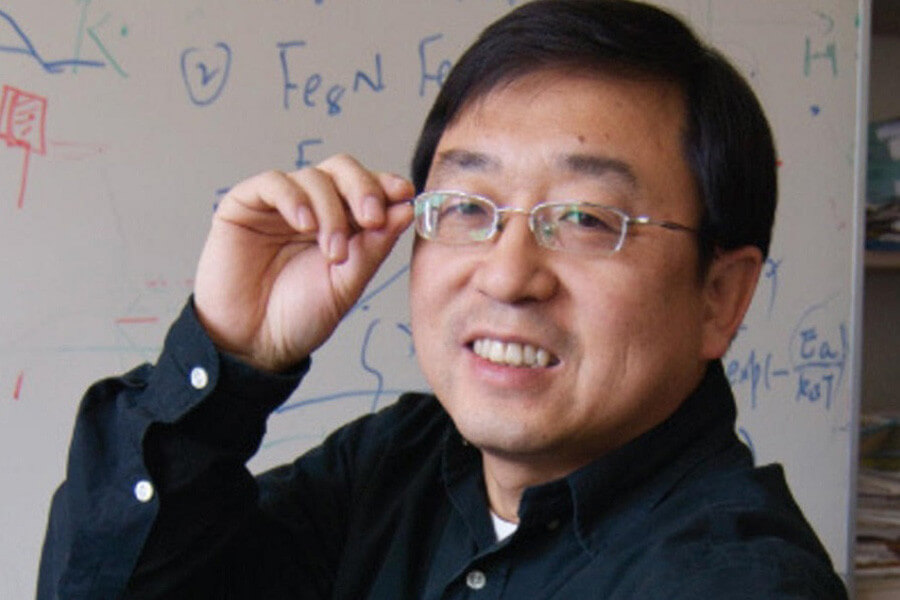Nano- and Micromagnetics and Spintronics for Biomedical Applications
Details
| Presenter: | Jian-Ping Wang |
| Title: | Nano- and Micromagnetics and Spintronics for Biomedical Applications |
| Affiliation: | Distinguished McKnight University Professor and Robert F Hartmann Chair, Electrical and Computer Engineering Department, University of Minnesota |
| Date: | 17.03.2022 |
| Time: | 16:00 h |
| Place: | Online via zoom |
Contents of the Talk
 In this talk, I will discuss our group’s research effort to explore the usage nano- and micro- magnetic materials and systems and spintronic devices for a variety of biomedical applications during the past two decades. First, I will briefly introduce and summarize our effort on the usage of giant magnetoresistance (GMR) devices for disease early detection. Then I will talk about the development of magnetic nanoparticle spectroscopy (MPS) technique for the detection of viruses and recent progress. Finally, I will share with you about our recent results on the usage of microcoils for neurostimulation and modulation, which can potentially address some of limits for traditional electrode-based neurostimulation.
In this talk, I will discuss our group’s research effort to explore the usage nano- and micro- magnetic materials and systems and spintronic devices for a variety of biomedical applications during the past two decades. First, I will briefly introduce and summarize our effort on the usage of giant magnetoresistance (GMR) devices for disease early detection. Then I will talk about the development of magnetic nanoparticle spectroscopy (MPS) technique for the detection of viruses and recent progress. Finally, I will share with you about our recent results on the usage of microcoils for neurostimulation and modulation, which can potentially address some of limits for traditional electrode-based neurostimulation.
References
1. Diqing Su et al., "Advances in Magnetoresistive Biosensors", Micromachines, 11(1), (2020) 342. Kai Wu et al, "A Portable Magnetic Particle Spectrometer for Future Rapid and Wash-Free Bioassays", ACS Appl. Mater. Interfaces,13 (7) (2021) 7966–7976
3. Renata Saha et al "Strength-frequency curve for micromagnetic neurostimulation through excitatory postsynaptic potentials (EPSPs) on rat hippocampal neurons and numerical modeling of magnetic microcoil (μcoil)", J. Neural Eng. 19 (2022) 016018
4. Renata Saha et al, "A review on magnetic and spintronic neurostimulation: challenges and prospects", Nanotechnology 33 (2022) 182004
Jian-Ping Wang
Jian-Ping Wang is a Distinguished McKnight University Professor and the Robert F. Hartmann Chair of Electrical and Computer Engineering at the University of Minnesota. He got his undergraduate degree in physics from Lanzhou University and his PhD in physics from the Institute of Physics/CAS, Beijing. He received his postdoc training in National University of Singapore. He is a fellow of National Academy of Inventors, a fellow of Institute of Electrical and Electronics Engineers (IEEE) and a fellow of American Physical Society (APS). He is the director of the Center for Spintronic Materials for Advanced Information Technology (SMART). He is a recipient of the Outstanding Professor Award for his contribution to undergraduate teaching in 2010. He received the information storage industry consortium (INSIC) Technical Achievement Award in 2006 for his pioneering experimental effort on the exchange-coupled composite media (ECC), which has been used for today’s HDD industry. He is the recipient of 2019 Semiconductor Research Corporation (SRC) Technical Excellence Award for his pioneering work on nanomagnetics and spintronic devices that have been used in today’s STT-RAM products. He co-founded three startup companies out of lab research, including the one to use GMR biosensors for disease early detection. He is the leader of Minnesota NuroSpin Initiative.




